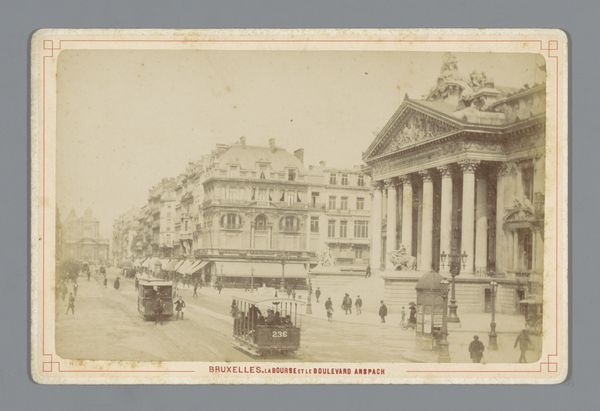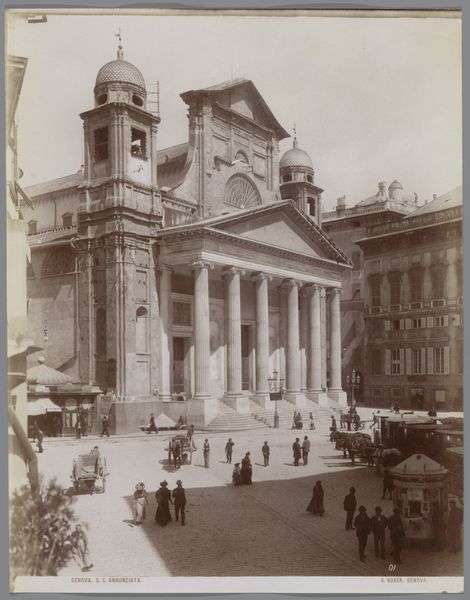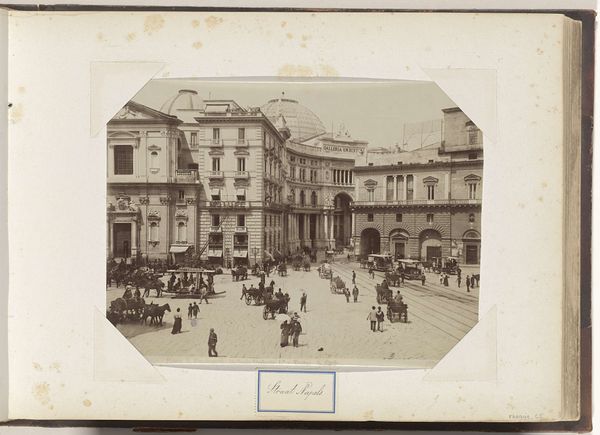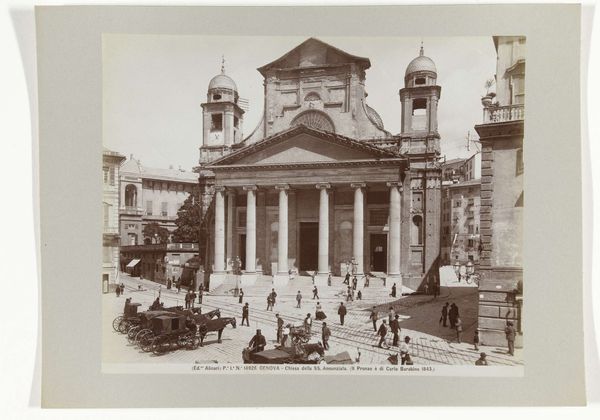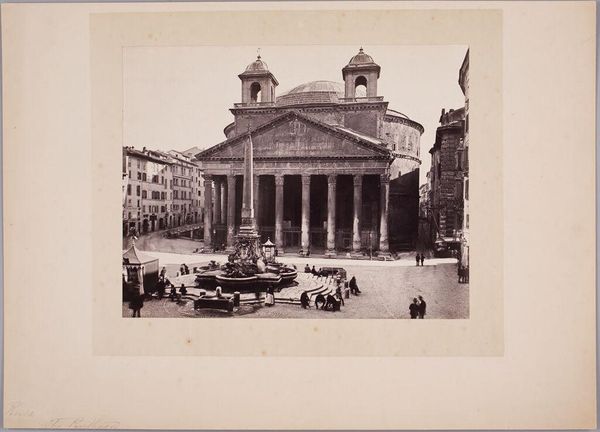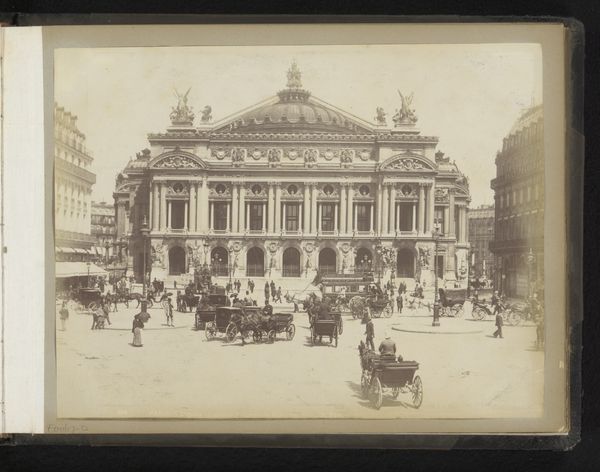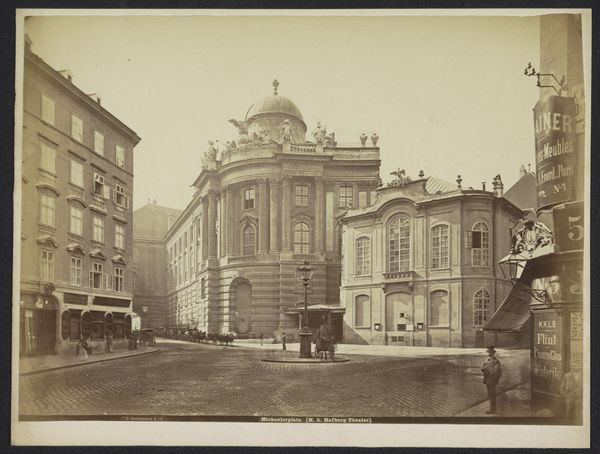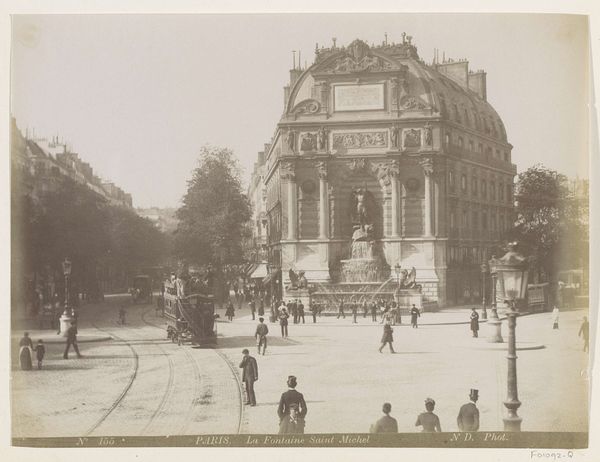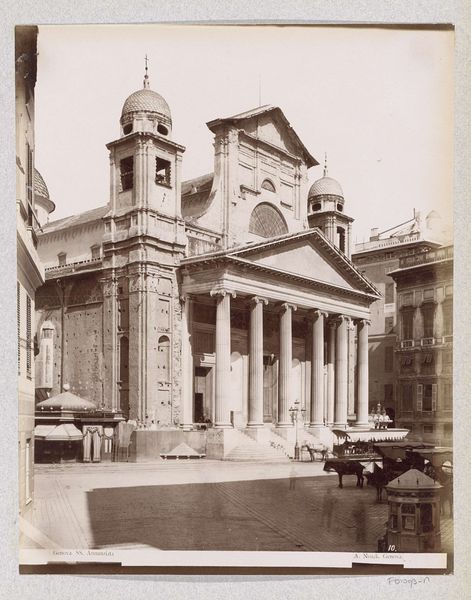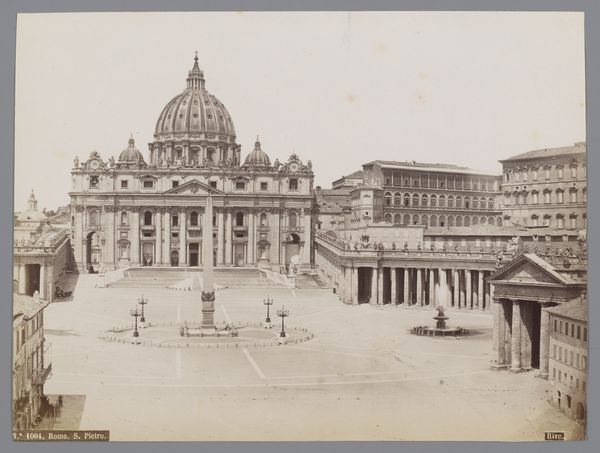
Dimensions: height 213 mm, width 276 mm
Copyright: Rijks Museum: Open Domain
Editor: This albumen print from before 1899 shows the Brussels Stock Exchange by Étienne Neurdein. I'm immediately struck by the contrast between the monumental architecture and the everyday street activity. What catches your eye about it? Curator: The albumen print process itself is a crucial element. This method, popular in the 19th century, involved coating paper with egg white to create a smooth surface for the photographic emulsion. Look closely – that surface allows for incredible detail. We’re seeing not just an image, but the product of a specific material and labour-intensive process. Notice the detail of the Neo-Classical façade, enabled by the labor required by albumen prints and the industrial production of glass-plate negatives? It’s about making a specific version of reality available to many through reproduction, raising the status of commercial photography as a process rather than pure craft. Editor: So you are seeing this not just as a depiction of Brussels, but also of a specific industry in early photography? How does the printing process relate to the scene it’s representing? Curator: Absolutely. The stock exchange itself facilitated trade and economic exchange. Similarly, the albumen print made visual representation a commodity. Look at the way workers are staged within the image. They animate it, proving the circulation of commerce – both of bodies and money. The materiality of the photograph connects directly to the capitalist context it represents. Editor: That makes a lot of sense. I hadn’t considered how the materiality and the content reflected similar economic principles. I appreciate your materialist view of art! Curator: And I your curiosity! Thinking about art this way encourages us to investigate not just what's depicted, but how it came to be, and who benefited in its creation.
Comments
No comments
Be the first to comment and join the conversation on the ultimate creative platform.
